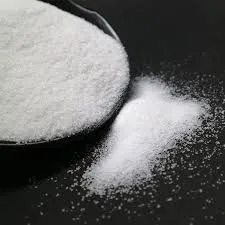Sulphamic Acid A Versatile and Essential Compound
Sulphamic acid, also known as amidosulfonic acid, is a colorless, crystalline solid with the chemical formula H3NSO3. It is a versatile compound that finds various applications across multiple industries due to its unique chemical properties. This article explores the characteristics, uses, and importance of sulphamic acid in different sectors.
Characteristics of Sulphamic Acid
Sulphamic acid is a stable, non-volatile substance that is soluble in water, alcohols, and other polar solvents. Its melting point is relatively high at around 205 °C, and it has a pH value of approximately 1.2 in solution, indicating its acidic nature. The compound is non-toxic, making it a safer alternative to other strong acids, which is a significant advantage in many industrial applications.
The molecular structure of sulphamic acid features a sulfonamide group (-SO2NH2), which is linked to a hydroxyl group (-OH). This unique structure enables the compound to behave as both an acid and a sulfonamide, allowing it to participate in a variety of chemical reactions. Its stability and robustness make it suitable for use in harsh environments, further enhancing its appeal in industrial applications.
Applications of Sulphamic Acid
1. Cleaning Agent One of the primary applications of sulphamic acid is as a cleaning agent. It is widely used in descaling formulations to remove limescale, rust, and other deposits from surfaces, particularly in boilers, heat exchangers, and cooling systems. Because of its non-toxic nature, sulphamic acid is preferred over stronger acids such as hydrochloric acid in many cleaning applications, especially those involving surfaces that are sensitive to corrosion.
2. pH Regulator In various industries, maintaining the right pH level is crucial for process efficiency and product stability. Sulphamic acid is often used as a pH regulator in swimming pools, cooling towers, and industrial processes. It effectively lowers the pH of water, helping to prevent scaling and corrosion in pipes and equipment.
sulphamic acid

3. Chemical Intermediate Sulphamic acid serves as an important intermediate in the synthesis of numerous chemicals, including agricultural products, pharmaceuticals, and dyes. Its amino group can be easily transformed into various functional groups, enabling the creation of diverse chemical compounds.
4. Curing Agent In the manufacturing of plastics and resins, sulphamic acid acts as a curing agent. It helps in the cross-linking of polymer chains, improving the mechanical properties and thermal stability of the final product. This makes it particularly valuable in the production of formaldehyde-based resins, which are widely used in adhesives and coatings.
5. Laboratory Reagent In laboratories, sulphamic acid is often utilized as a reagent for various chemical reactions. Its ability to form stable complexes with metals makes it useful in analytical chemistry and wastewater treatment applications, where it helps in the removal of heavy metals from effluents.
Importance and Future Prospects
The importance of sulphamic acid cannot be overstated. Its versatility, safety, and effectiveness make it a preferred choice in many applications, ranging from cleaning agents to chemical intermediates. As industries continue to prioritize environmentally friendly and sustainable practices, sulphamic acid is likely to gain even more prominence. Its low toxicity and ability to replace harsher chemicals align well with the growing trend toward safer industrial practices.
Furthermore, with ongoing research into new synthetic pathways and applications, the future prospects for sulphamic acid appear promising. Innovations in chemical processes and technology may broaden its applications, making it an integral part of new, sustainable solutions across various sectors.
Conclusion
In summary, sulphamic acid is a vital compound with various applications in cleaning, chemical synthesis, and industrial processes. Its unique properties and advantages over other acids make it suitable for a wide range of uses. As industries evolve and focus on safety and sustainability, sulphamic acid is poised to play a crucial role in meeting these demands, underscoring its importance in the modern chemical landscape.

